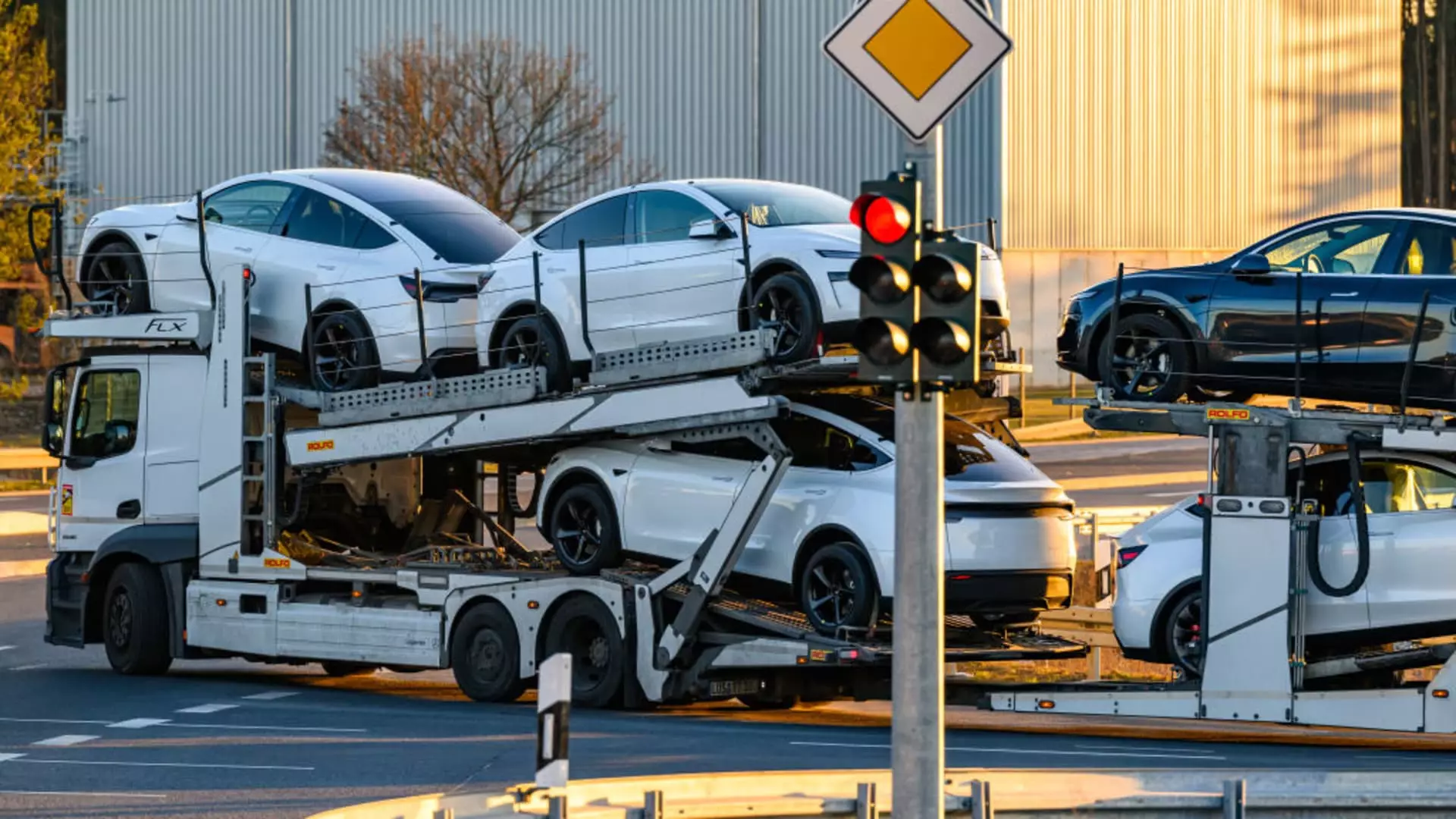Tesla’s announcement of 336,681 vehicle deliveries in the first quarter of 2025 sent ripples through the electric vehicle (EV) market, but perhaps not in the way the company had hoped. This figure represents a disappointing 13% decrease from the previous year, marking a significant downturn in what was once an unstoppable growth trajectory for the company. One can’t help but question whether this alarming trend is merely a temporary hiccup or indicative of deeper, systemic issues within Tesla and its leadership.
The expected baseline for deliveries, which analysts pegged at between 360,000 and 370,000 units, was noticeably surpassed; yet, actual figures have fallen short. The discrepancy between the estimated 377,590 deliveries from Tesla’s investor relations team and the reported numbers is glaring. The market, which has grown accustomed to Tesla’s impressive results, seems to be increasingly wary. Analysts like Dan Ives are labeling the quarter as a “fork in the road moment,” suggesting that a reckoning for Tesla’s once-promising future may be looming.
Production Versus Deliveries: A Tale of Two Cities
The figures reveal a troubling contradiction: while production reached a robust 362,615 units, deliveries lagged far behind, suggesting either a mismatch in consumer demand or potential logistical challenges. Tesla produced 345,454 of its flagship Model 3 and Model Y vehicles but managed to deliver only 323,800. These numbers raise an essential question: why are sales falling short despite the company’s robust manufacturing capabilities?
Tesla does not disclose sales figures by model or region, which complicates understanding the market dynamics. Nevertheless, the partial factory shutdowns required for upgrades indicate a level of unrest within the supply chain, which could further stifle sales. Musk’s promises of revitalizing the Model Y to regain its title as “the best-selling car on Earth” may seem increasingly hollow as reality sets in, demonstrating the gap between corporate ambition and market reality.
The Competition: Rising Tides in the EV Market
As Tesla grapples with its internal challenges, it faces an onslaught from competitors. The landscape of the EV market is rapidly shifting, with companies like BYD making significant strides, particularly in regions such as China, where Tesla’s sales slumped by 11.5% year-over-year in March 2025. This fierce competition is not limited to one demographic sector; it is spreading globally, eroding Tesla’s once-dominant market share.
In Europe, Tesla’s market share has plummeted dramatically, dropping from 17.9% to a mere 9.3%. In Germany, Tesla is now barely holding onto relevance with a market share of just 4%. These figures raise eyebrows and highlight a deeper existential question: can Tesla retain its foothold in a market that is increasingly crowded and murmuring with doubts about its leadership?
Musk’s Political Aspirations: A Double-Edged Sword
Elon Musk’s foray into politics has not weathered the scrutiny of the public eye. His involvement with the Trump administration and support for far-right political movements in Europe have led to protests, boycotts, and even criminal activity against Tesla. This political entanglement could pose a risk to the company’s brand image, affecting consumer sentiment and alienating those who might otherwise support it.
The backlash against Musk’s political statements has raised significant reputational risks for Tesla. It is no longer just about delivering electric vehicles; the company is now contending with public perceptions that may directly impact its sales and market viability. Unfavorable sentiments stemming from Musk’s political life could be creating a widening chasm between the company and its customer base, especially as socially conscious consumers make difficult decisions in an increasingly polarized world.
The Financial Landscape: Avalanche of Losses
Quarterly reports reveal that Tesla’s shares took a massive hit, plunging 36% in Q1—the steepest drop since late 2022. This decline wiped out an eye-watering $460 billion in market cap. Such financial turbulence raises pressing concerns about investor confidence going forward. This should serve as a wake-up call for Tesla’s leadership, as it signals that the market won’t continue to support a company that appears to be losing its edge.
With growing evidence of a worrying trajectory in both production and political entanglement, Tesla is rapidly transitioning from a market darling to a symbol of uncertainty. Despite Musk’s previous success in steering the company through turbulent waters, this latest development feels more like riding a roller coaster without a safety harness—a thrilling but dangerous ride that may lead straight to the abyss.

